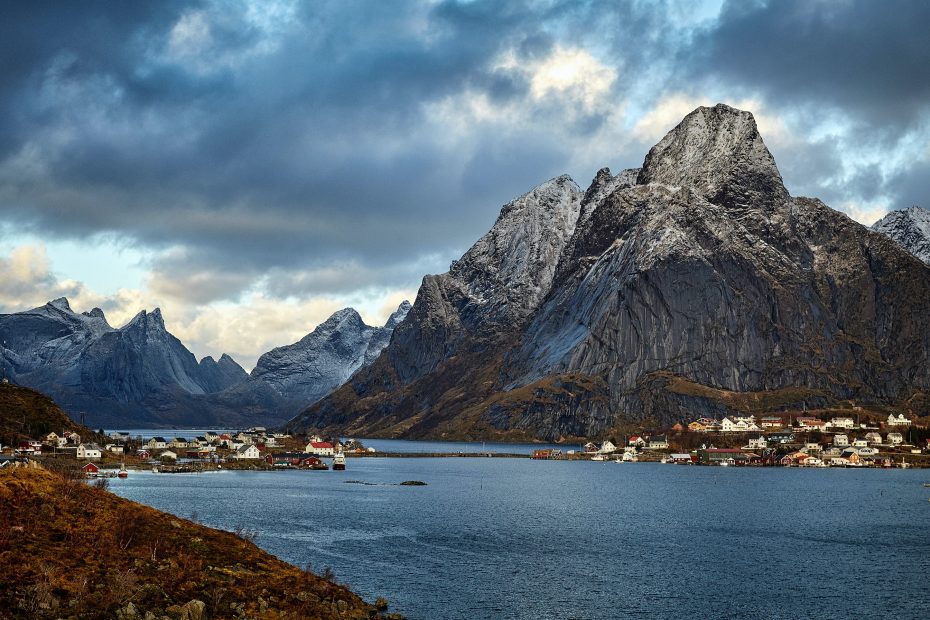Norway’s stunning landscapes and cosmopolitan cities attract visitors from around the world today. But many come to Norway to explore its ancient Viking history and legends, which have helped shape the country’s national identity. From archaeological sites to artifacts and mythology, Norway offers numerous opportunities to discover its rich Viking heritage.
Table of Contents
Viking Archaeological Sites
Several archaeological sites around Norway provide glimpses into Viking history and culture from centuries ago. Two of the most famous are the Oseberg Ship and the Gokstad Ship, excavated in the early 1900s in Vestfold County. These ships held the remarkably well-preserved remains of two prominent Viking women who were buried with riches like wagons, beds, and tapestries around 800 CE. The intricate carvings and designs of the ships reveal incredible Viking craftsmanship and seafaring capabilities.
Another key site is the Borre Mounds cemetery in Vestfold, which contains over 50 burial mounds from the Viking Age. This elite cemetery likely held the remains of early Norwegian kings and nobility. Visitors can walk among the grass-covered mounds while learning about excavated treasures like weapons, jewelry, and wagons.
The Kaupang Trading Center, active from around 800-900 CE, was one of the first Viking towns and an important seaside marketplace. Excavations have uncovered houses, workshops, jetties, and extraordinary artifacts shedding light on the community’s crafts and trade connections across Scandinavia and Europe.
Viking Artifacts
Several types of artifacts found across archaeological sites provide insights into everyday Viking life. Their iconic longships enabled far-reaching trade and warfare expeditions. Everyday tools, crafts, and ornaments paint a picture of a society skilled in complex industries like carpentry, textiles, and metalworking.
Intricately detailed jewelry pieces in silver, gold, and bronze contained symbols of Norse mythology. Boxes, combs, shields, and other household objects bore ornate animal and geometric motifs. Many artifacts reveal the Viking mastery of their harsh environment through well-designed boots, fishing tackle, sleds, and more. Their craftwork greatly influenced art and design in later centuries.
Viking Legends and Mythology
Viking legends and myths showcase the religious beliefs that shaped their worldview. Their pantheon included powerful gods like Odin, the wise, fearsome “Allfather;” Thor, the thunderous protector god; and Freya, the beautiful goddess of love and fertility. Creative stories and poems told of the gods’ adventures and their fated battles with enemies like the wolf Fenrir and the Midgard Serpent Jörmungandr.
The elaborately imagined World Tree Yggdrasil connected the various realms of existence, from the gods’ home in Asgard to the mortal realm Midgard and beyond. Vikings hoped to reach the paradisaical realm of Valhalla after death by dying bravely in battle. The mythic tales of Ragnarok prophesized the world’s fiery end and recreation after the gods’ cataclysmic last battle.
Heroic legends centered on dragonslayers like Beowulf and warrior kings like Ragnar Lothbrok. Their adventurous, often tragic stories inspired future generations. Modern fantasy creations like Thor comics and Vikings TV shows continue to build on these legends’ creative legacy.
Modern-Day Connections
Norway’s Viking Age laid the foundations of Norway’s culture and identity. Their influence is still seen in Norway’s flag, place names, literature, and language. Norwegians take great pride in this heritage, evident in everything from sports team names to Oslo’s airport decorated with dragon statues.
Viking themes and re-enactments are highlights of cultural festivals across Norway. Crowds cheer on costumed warriors sparring with swords and axes at festivals like the Tonsberg Viking Festival each summer. The island village of Lofotr features an authentic reconstructed Viking chieftain’s longhouse for visitors to explore year-round.
Pop culture phenomenons like Marvel’s Thor comics and films and the Vikings television drama have renewed global fascination with the bold, adventuresome world of the Vikings. From museum exhibits to live re-enactments, Norway provides countless opportunities to vividly experience the exciting Viking Age. As much a part of Norway’s present as its past, the Viking legacy continues to captivate people worldwide.
Conclusion
Norway’s historic Viking Age has left an indelible impact on the country’s culture and identity. From architectural marvels like the Oseberg Ship to imaginative myths featuring the great Norse gods, Norway abounds with visible remnants of its Viking heritage. By exploring archaeological sites, artifacts, stories, and modern-day connections, visitors can vividly encounter the adventuresome Viking world that shaped Norway. Whether marveling at intricately wrought jewelry, listening to a mythic saga, or cheering on costumed warriors, experiencing Norway’s Viking history and legends offers the chance to profoundly connect with this ancient past still so relevant today.
FAQs
What types of artifacts were found in Viking archaeological sites?
Some key artifacts found include jewelry, weapons, tools, woodworks, textiles, and entire ships like those found at Oseberg and Gokstad. These provide insights into Viking craftsmanship, seafaring capabilities, trading activities, battles, and daily life.
What is Valhalla in Norse mythology?
Valhalla was the mythical hall in Asgard where worthy Viking warriors slain in battle would spend their afterlife feasting and fighting eternally. Vikings aimed to die bravely in battle to reach this warrior paradise after death.
Where can you see Viking re-enactments in Norway?
Many festivals across Norway feature Viking re-enactments with costumed warriors displaying combat skills and handicraft demonstrations. The Lofotr Viking Museum also has live re-enactments portraying the Viking chieftain’s household.
How have Viking themes influenced Norwegian culture today?
Modern Norwegian culture shows Viking influence through the Norwegian language, city names, flag design, literature, art, and national pride in their heritage. Many sports teams also use names referencing Norse gods, warriors, and ships.
Why do Viking myths and legends remain popular today?
Viking tales creatively portray larger-than-life gods, monsters, heroes, and battles. They imaginatively explore human hopes and fears. Their timeless themes continue inspiring new generations through media like Marvel’s Thor comics and films.
